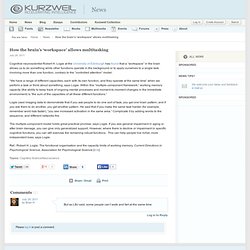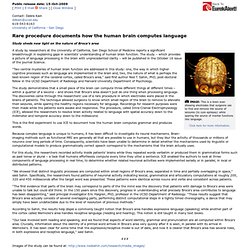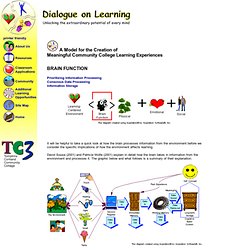

Oversimplified memory theories ignore time-based patterns: psychologist. Cognitive psychologist Douglas L.

Hintzman has urged memory researchers and theorists to consider the wide variety of things that memory does for us and not to oversimplify them. “Cognitive psychologists are trying to be like physicists and chemists, which means doing controlled laboratory experiments, getting numbers out of them and explaining the numbers,” says Hintzman, now retired from the University of Oregon. Most experiments, he says, involve giving people lists of words and asking them to remember the words.
Hintzman has reviewed the literature and experimental models in this field and concluded that these simple experimental tasks, observed in isolation from one another, yield theories that are so oversimplified as to fundamentally misrepresent the nature of memory. For instance, he says, these word-list tasks make it look as if we only remember when we intentionally put our minds to it— yet we all experience spontaneous memories, many times every day.
Ref: D. Can you trust your memory? Take these two simple tests. (Credit: iStockphoto) WAIT! Before you read further (and I totally contaminate your mind), I suggest you take these two simple short tests: 1. Selective Attention Test 2. How aging affects working-memory neuron firing rate and how to improve it. Average activity for the brain networks that subserve working memory (credit: Min Wan et al.

/Nature) The neural networks in the brains of the middle-aged and elderly have weaker connections and fire less robustly than in youthful ones, Yale University researchers have found. How the brain’s ‘workspace’ allows multitasking. Cognitive neuroscientist Robert H.

Logie at the University of Edinburgh has found that a “workspace” in the brain allows us to do something while other functions operate in the background or to apply ourselves to a single task involving more than one function, contrary to the “controlled attention” model. “We have a range of different capacities, each with its own function, and they operate at the same time” when we perform a task or think about something, says Logie. Brains that switch between active areas more often learn faster. The functional connectivity between two cortical structures is given by a Pearson correlation between the mean regional activity of fMRI signals from 112 brain regions (right).

The resulting N × N correlation matrix was statistically corrected by constructing a subject-specific weighted functional brain network (left). (Credit: Danielle S. Bassett et al. /PNAS) The “flexibility” of a person’s brain — how much different areas of the brain link up in different combinations — can be used to predict how fast someone will learn, according to research by an international team from Oxford University, UC Santa Barbara, and UNC Chapel Hill. The team ran an experiment over 3 sessions in which 18 volunteers had to push a series of buttons as fast as possible. They found that people with more “flexible” brains, whose brain regions switched active areas more often, were faster at learning the motor tasks. Ref.: Danielle S. Rare procedure documents how the human brain computes language. Public release date: 15-Oct-2009 [ Print | E-mail Share ] [ Close Window ]

People control thoughts better when they see their brain activity. How People Learn Brain, Mind, Experience, and School. Brain scan reveals memories of where you've been - health - 12 March 2009. Scans of the part of the brain responsible for memory have for the first time been used to detect a person's location in a virtual environment.

Using functional MRI (fMRI), researchers decoded the approximate location of several people as they navigated through virtual rooms. This finding suggests that more detailed mind-reading, such detecting as memories of a summer holiday, might eventually be possible, says Eleanor Maguire, a neuroscientist at University College London. Her team trained its scanner on the hippocampus, a region of the brain critical to the formation and storage of memories. It is known that in animals, specialised place cells in the hippocampus fire regularly as they move from place to place. Firing patterns To see if these firing patterns could be read out, Maguire's team adapted a computational technique previously used to predict the image a person is gazing at and even their intentions. Spatial information Future techniques. Brain Power: Studying Young Minds, and How to Teach Them.
Brain Function. A Model for the Creation of Meaningful Community College Learning Experiences BRAIN FUNCTION Prioritizing Information Processing Conscious Data Processing Information Storage It will be helpful to take a quick look at how the brain processes information from the environment before we consider the specific implications of how the environment affects learning.

David Sousa (2001) and Patricia Wolfe (2001) explain in detail how the brain takes in information from the environment and processes it. The graphic below and what follows is a summary of their explanation. Our brains take in huge amounts of information from the environment daily. Think of all the sounds, sights, smells, tastes, and sensations that are taking place around you at any given moment. The information is registered by our five senses. Emotional data receives the second highest priority for processing in short term memory.